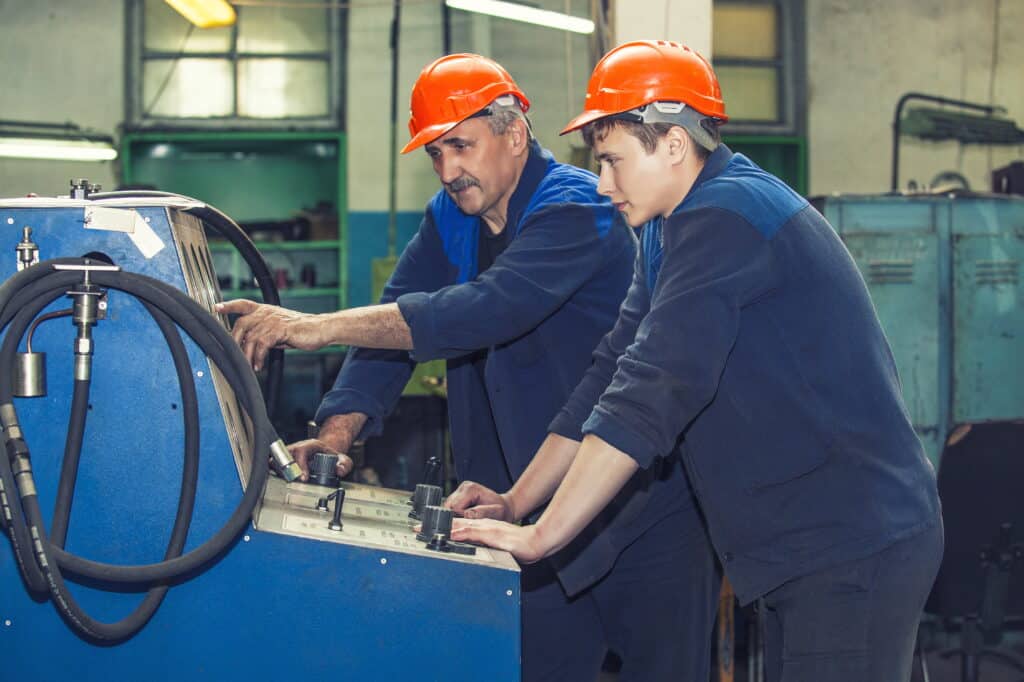With the ever-increasing costs of health care, including the significant cost of the opioid epidemic, along with a deeper understanding of the causes of workplace injury, effective ergonomic assessments have become more important than ever. As a component of an overall employee health and safety initiative, ergonomic evaluations now provide a range of solutions for employers looking to preserve and care for a workforce that is both increasing in size and growing older.
An aging workforce poses significant challenges for employers; as the demographic shifts, so too does the risk for employees. However, with a combination of detailed observation, communication with employees, and focused analysis of the work and the surrounding environment, companies now possess the capability to reduce costs and create a positive, proactive culture of workplace wellness and safety.
What is ergonomics?
The impact of pain is affecting organizations in multiple ways. The field of ergonomics, though proven to reduce one-time injuries, focuses chiefly on preventing reoccurring injuries and mitigating chronic pain. This is accomplished through a balance of workplace design, optimized equipment, and even adjusted job specifications. As such, a proper ergonomics assessment begins with observation and analysis of the work environment. Most workplace injuries are a result of poor workplace ergonomics, especially injuries related to musculoskeletal disorders.
For example, a 2016 study by the US Department of Labor have shown that up to 30% of back injuries leading to potentially unnecessary surgery could be prevented by improved workplace design and ergonomics.
An ergonomic assessment can illuminate opportunities to improve employee wellness by isolating key factors like poorly fitted equipment and unsafe, outdated work practices. Assessors can collaborate directly with employees, using an educational and cooperative approach that takes into account each employee’s experience, age, and physical capabilities. This communication is critical; without an open culture of continuous improvement, employers may face resistance from experienced employees, leading to increased risk.
“Effective ergonomic assessments engage employees directly, collecting feedback
and garnering valuable insight into the common stressors that can lead to
injury and chronic pain among employees”,
shared Rainene Miller, Clinical Lead at DORN Companies.
When combined with hands-on training opportunities and continuous observance of new workplace safety standards, an ergonomic assessment can isolate problem areas and develop specific solutions.
Assessment and Implementation Strategies
Proper ergonomically based training improves long-term employee health across workers of all ages. Working closely with experienced employees, an ergonomic assessor will define the best work strategies and practices and help bridge the generational gap, providing younger workers with safe habits that lead to better health issues and fewer workers’ compensation claims. These strategies can include implementing micro breaks, limitations on shelf heights and carry limits, and designing tools that allow workers to accomplish their responsibilities without putting them at risk of chronic injury.
Ultimately, the goal of ergonomics is to promote a healthy lifestyle among employees. Organization leaders can improve the wellness of their staff by focusing on the common issues that plague workplaces, developing good practices for strength, balance, posture, and flexibility of workers. Combined with wellness initiatives such as onsite gyms, manual therapy, nutrition advice, and other education and training on proper body mechanics, ergonomics can have a significant impact on the overall health and well-being of employees. Focusing collectively on body, behavior, and environment increases the likelihood of a pain- and injury-free workforce while empowering employees to take ownership of their own healthcare through education and engagement. Ergonomics then becomes a key component of a Total Worker Health® organizational culture.
Additionally, an ergonomic assessment might highlight opportunities to update equipment and infrastructure to better support good health, with small changes like improved furniture and modern, ergonomically designed workstations having a direct and significant impact on the culture of the organization and the overall productivity of its workforce.
Ergonomics for an Aging Workforce
These benefits are especially important in the modern workplace, when the average age of the workforce has never been higher. According to the US Department of Labor, workers between 45 and 55 years old now comprise 44% of the national workforce, and more than 20% of the workforce is aged over 55 with expectations that will grow to 25% by 2020. People in today’s workforce work further into their lives than generations past, creating a wealth of experience that has benefited employers in all fields.
However, an aging workforce presents unique challenges in workplace safety. As workers age, they tend to lose physical strength, general fitness, and muscle mass, and older workers frequently deal with poorer vision and hearing. Higher age often implies a need for more rest, adjusted lifting requirements, more attention to posture, and better lighting. Ergonomic assessment can be tailored to workers of higher age, isolating the causes of injuries among older workers and finding specific solutions to prevent future issues.
Time and motion studies are essential in addressing an older workforce. Many musculoskeletal disorders stem from repetitive motion sustained over long periods of time. Likewise, motion that requires lifting or reaching above the head is more likely to cause injury, as are the prolonged use of awkward postures and the need for excessive force. Adjusting these criteria can reduce worker fatigue and contribute to a healthier workplace.
The Bottom Line
In addition to its health and practical benefits, ergonomic assessment is essential for organizations looking to reduce costs. Data from the Occupational Safety and Health Administration (OSHA) demonstrates the massive impact of workers’ compensation claims, with musculoskeletal disorders alone contributing up to $20 billion in direct costs incurred to employers along with the impact of pain on the healthcare system and productivity, bringing the real cost of pain to hundreds of billions of dollars annually. In fact, one third of all workers’ compensation costs originates with poor ergonomics.And it’s not just about cash—according to the US Department of Labor Statistics, ergonomic injuries, which in most cases are preventable, typically carry an average of 12 days missed by an employee. These are massive incursions that can significantly affect a company’s bottom line; improved ergonomics combined with wellness are an effective and worker-friendly way of staying fiscally healthy.
In short, proper ergonomics should be a priority for all employers, regardless of industry. By implementing a proactive approach to ergonomics as part of a Total Worker Health® approach in the workplace, companies can mitigate costs while improving difficult-to-measure variables like productivity and employee engagement. In a time when 75% of workers say that feeling safe in the workplace is essential but only 29% feel fully engaged at work, innovative wellness strategies are critical for maintaining a successful organization. A healthy culture that emphasizes the importance of safety will help employers keep their best workers while attracting more high-quality, skilled employees who value safety and good health. With an objective assessment of the workplace and careful, personalized analysis of job requirements and employee characteristics, employers can avoid unnecessary costs while maintaining a productive, engaged, and healthy workforce.
DORN Companies recently certified seven team members as Industrial Ergonomic Evaluators and is ready to support organizations to evaluate and design ergonomic- and wellness-based programs that provide a road map to preventing future injuries while promoting overall employee health and well-being. Contact us today for more information.
To learn more about how organizations are addressing pain and preventing costly workplace injuries through a combination of ergonomic and wellness solutions, please join us at ErgoExpo in Las Vegas. Kevin Lombardo, DORN Companies CEO, and Kristie Elton, Risk and Safety Program Manager at University of CA, will share their experience and lessons about Chronic Pain with an Aging Workforce.
Room: Champagne 2 Session Number: HE1
Wednesday, August 23, 2017: 8:30 AM - 9:30 AM






